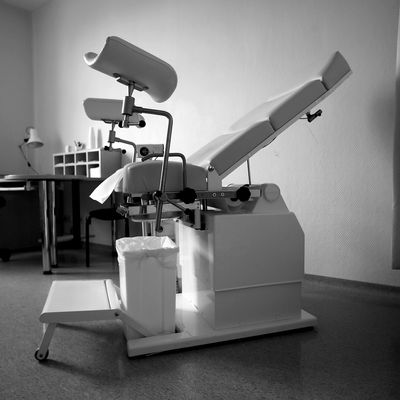
Millions of girls and young women may have been subjected to invasive pelvic exams and pap smears they didn’t need, according to estimates from researchers at the University of California San Francisco and the Centers for Disease Control and Prevention. A new study, published in JAMA Internal Medicine, says that as many as 1.4 million patients between the ages of 15 and 20 may have had unnecessary pelvic exams within a year.
The American College of Obstetrics and Gynecology no longer recommends pelvic exams — which involve a physician inserting two fingers into the vagina, to check for abnormalities or infection — for most people under the age of 21, and hasn’t since 2009. If a patient presents with particular symptoms, such as pain or the inability to insert a tampon, if they are pregnant, or if they are getting an IUD, a manual exam could be warranted. But many people find the exams painful or uncomfortable, and given the potential risk of “false-positive test results, over-diagnosis, anxiety, and unnecessary costs,” as the authors point out in the study, there’s not much reason to perform them on people in this age group. There are less invasive STI-testing methods available, and while HPV has long been a concern for young people, pap smears to test for cervical cancer also aren’t recommended until patients turn 21.
Pap smears, according to the study, tended to accompany pelvic exams. The researchers analyzed survey data from 2011 to 2017, sourced from 3,410 girls and young women aged 15 to 20. Very few respondents reported STI treatment (4.5 percent), pregnancy (4.8 percent), or IUD use (2 percent) within a 12-month period. Within the same time frame, about 2.6 million girls and young women in the same age bracket reported having received a pelvic exam, and 2.2 million said they’d received pap smears. Based on the data, the researchers concluded that 54.4 percent of those exams and 71.9 percent of those pap tests may have been unnecessary.
Dr. George Sawaya, a professor of obstetrics, gynecology, and reproductive sciences at the University of California, San Francisco, and the study’s lead author, told NBC that the team didn’t know why these procedures remained so widespread, although it may have something to do with habit.
Nonetheless, with high-profile incidents of sexual abuse by medical practitioners — such as Larry Nassar, the former doctor for the Olympic gymnastic team and George Tyndall, the University of Southern California gynecologist whom dozens, potentially hundreds, of former patients have accused of misconduct — in the news cycle, Sawaya told NBC that researchers “want to empower girls and young women to ask, ‘Why do I need this exam?’” if their gynecologist suggests one. To judge by this data, there’s a good chance they don’t.





